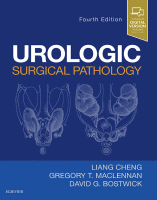Physical Address
304 North Cardinal St.
Dorchester Center, MA 02124

You’re Reading a Preview Become a Clinical Tree membership for Full access and enjoy Unlimited articles Become membership If you are a member. Log in here

Embryology and Normal Gross Anatomy Adrenal Cortex The primordium of the adrenal cortex becomes evident at Carnegie stage 14 (~ 5 to 7 mm and 32 days), just lateral to the base of the dorsal mesentery near the cranial end…

Penis Normal Anatomy and Histology The penis consists of three portions: the root, the body, and the glans. The root lies in the superficial perineal pouch and provides fixation and stability. The body constitutes the major part of the penis…

Introduction The paratesticular region includes the testicular tunics, efferent ductules, epididymis, spermatic cord, and vas deferens. Most studies of paratesticular region pathology include the rete testis despite its intratesticular location. Numerous rare and interesting lesions arise in this region, including…

Although weighing only about 19 grams, the testis is responsible for a complex array of neoplasms. The rapidly proliferating spermatogenic cells give rise to the majority of testicular tumors, 95% of which are of germ cell derivation. Most are malignant…

Embryology and Anatomy of the Testis Embryology Development of the Testis Genetic Mechanisms Involved in Sex Determination and Testicular Differentiation Sexual differentiation is the result of complex genetic and endocrine mechanisms that are closely associated with the development of both…

Embryologic Development and Normal Anatomy The urethra serves as a conduit for urine from the urinary bladder to the exterior through the external urethral meatus. In males it also serves as a conduit for semen. The epithelium of the urethra…

Introduction The seminal vesicles were described by the Italian anatomist Berengario a Carpi in 1521. These paired androgen-dependent accessory sex glands were first regarded simply as storage sites for semen, but their milky alkaline secretions are now known to constitute…

Benign Epithelial Tumors and Tumor-like Proliferations Prostatic Cysts Giant multilocular prostatic cystadenoma is a large tumor composed of acini and cysts lined by prostatic-type epithelium set in a hypocellular fibrous stroma. This rare tumor arises in men between 28 and…

Embryology and Fetal-Prepubertal History The prostate is derived from the urogenital sinus. During the first 10 weeks of gestation, testosterone from the embryonic testes stimulates ingrowth of epithelial buds into urogenital sinus mesenchyme through a feedback loop. The mesenchyme induces…